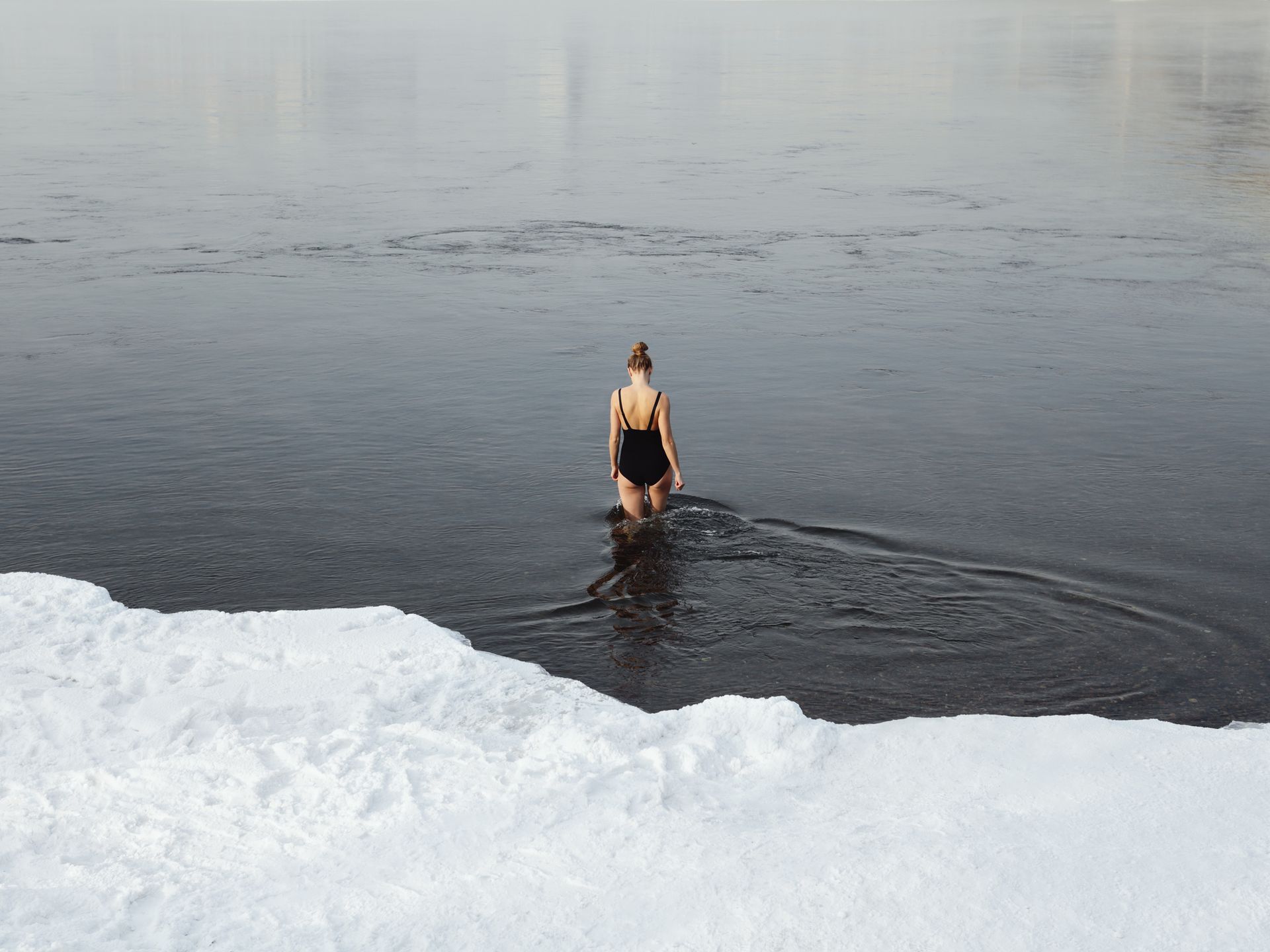In headline news today, actress Kate Winslet (opens in new tab) revealed that she learned to hold her breath underwater for over seven minutes while filming Avatar: The Way of Water.
She smashed the previous celebrity record, achieved by Tom Cruise while filming Mission: Impossible – Rogue Nation seven years ago (he reportedly managed a total of six minutes).
For reference, the global average sits between 30 seconds and two minutes. Thinking about giving it a go? Be warned: improving your ability involves rigorous training with qualified professionals.
“It certainly wouldn’t have been possible for me to hold my breath for that long at depth, so there were surface static breath holds that we were doing to improve your skills,” Winslet told Entertainment Tonight. “It’s a physical shift and it’s something that you have to learn how to do.”
“I would just hang there in the water, count the slats. I’d go over it again. I’d make lists in my mind. But you have to be careful not to make, like, too many comprehensive complicated lists because that also takes brain power.”
“I have the video of me surfacing saying, ‘Am I dead, have I died?’ And then going, ‘What was [my time]?’” Winslet said.
“Straight away I wanted to know my time. I couldn’t believe it.”
Potential benefits of holding your breath underwater for longer and improving your general breathing and lung function include possible regeneration of brain tissue, resistance to bacterial infections, and increased life span, but it’s worth pointing out it can be highly dangerous if not overseen by a qualified professional.
One form of water training that has been found to have health benefits is cold water therapy – recent research on things like ice baths indicates that cold water could ease chronic stress (opens in new tab), battle depression symptoms (opens in new tab), and even help to fight autoimmune disorders.
We’ve chatted to Dr Nirusa Kumaran (opens in new tab), medical director and founder of Elemental Health Clinic, and Laura Fullerton, CEO and Founder of Monk (opens in new tab), to get their verdict. Don’t miss our guides to wild swimming (opens in new tab) and the best swimming pools in the UK (opens in new tab), while you’re here.
So: is cold water bad for you?
Short answer, according to both of the experts we asked? Not if practiced properly.
“There are many health benefits of being exposed to cold water either via cold showers, baths, swimming and even cold water plunges,” shares Kumaran. These are mainly due to processes called autophagy and mitophagy, she goes on, processes where damaged cells are removed by the body allowing new cells to form or develop.
So how do they work to boost your health? Well, by enabling autophagy and mitophagy, you can help to prevent many chronic diseases and conditions, shares the doctor, including:
- Cancer
- Chronic fatigue
- Autoimmune conditions
- Inflammation
- Low energy
- Slow metabolism
- Weight gain.
Not only that, but studies have found that it can improve mental health (opens in new tab), speed muscle recovery (see you later, delayed onset muscle soreness (opens in new tab)), increase physical performance, strengthen immunity, protect brain function, and help with pain management, too.
One 2014 study (opens in new tab) published in the N Am J Med Sci journal showed that ice baths increase norepinephrine (aka adrenaline) by 530% and dopamine (the reward hormone (opens in new tab)) by 250%. “The explosion of these two neurotransmitters make your happiness and focus soar, relieves pain and depression, and make you feel on top of the world,” explains Fullerton.
She adds that cold water isn’t a new trend – as much as it is a 2022 buzz term – quite the opposite. “It’s been touted for its health benefits since 3500 BC,” the CEO explains. Fun fact: even Ancient Greek thinkers Hippocrates and Plato raved about the physiological benefits of cold water in hydropathy, and the Ancient Romans had cool pools in their infamous baths.
Fast forward to the present day and there’s incredible research in progress at the University of Cambridge, she shares. “So far, it shows that cold water therapy may be protective against neurodegenerative diseases like Alzheimer’s, which is just incredible.”
Why is there a misconception about cold water being bad for you?
Good question – because, for some, it’s not a benefit-touting-cure-all.
Kumaran explains that, while short durations of cold water exposure (think a couple of minutes or less) should be fine for most, prolonged periods in cold water could be dangerous if you’re not acclimatised.
Think about it: you wouldn’t run a marathon (opens in new tab) if you hadn’t trained (we’d hope), so suddenly immersing yourself in cold water for a prolonged period of time doesn’t seem like the best of ideas, either.

Not only might the initial cold shock cause muscle weakness, difficulties with movement and cramping, but the sudden exposure to cold could induce a shock response in your body in the form of hyperventilation (breathing too fast) or heart arrhythmia (a fast or irregular heartbeat), she warns. Of course, really prolonged cold exposure also runs the risk of causing hypothermia.
While no one’s advocating for putting yourself or your health at risk – think low and slow – Fullerton points out that cold water immersion is meant to be somewhat uncomfortable. “Unfortunately, depression (opens in new tab) is now the most prevalent mental health disorder in the world, and cases of anxiety have almost doubled since the pandemic began,” she goes on. (Read our explainer on the symptoms of stress vs anxiety (opens in new tab), here).
However, the silver lining is that people are more willing to get comfortable with being uncomfortable and try things like cold water therapy to experience the incredible mental and emotional benefits that come with it.
Bottom line: cold water immersion has often been thought of as dangerous because doing too much, too soon can be dangerous.
Aim for: 20 seconds or so if you’re a beginner and anything between two to three minutes after that for optimum health benefits.
Kumaran also recommends speaking to a healthcare professional, if you have any doubts. Cold exposure is not recommended for anyone who’s pregnant or has a heart problem, high blood pressure, or asthma.

What does cold water immersion feel like?
Again, many who practice it regularly rave about the mental health benefits, more than anything.
So how does Fullerton explain the feeling you get post-dip?
“I first tried cold water therapy at a breathwork training (opens in new tab) and ice bath (opens in new tab) workshop, and I felt incredible afterwards. I fell in love with the soaring endorphins that follow each dip, and the effect it has on my mental state.”
“For me, ice baths are like pressing the reset button: if I can survive two minutes in the cold, I can handle anything! They make me feel resilient, strong, and this mindset ripples out into all areas of my life.”
How to try cold water immersion yourself, according to the pros:
1. Start at a warmish temperature (between 10 to 15 degrees Celsius). You can fill your bath or even just stand under the shower.
2. Begin your timer and aim to stay under the cold water for anything from 20 seconds to a minute.
3. Step out and try and notice the after-effects on both your mind and body – those who regularly use ice therapy note a tingling sensation in their limbs and mental clarity.
4. As you become more experienced, you can change both the temperature and the length of time you try your immersion for.
Keen to give it a go?

